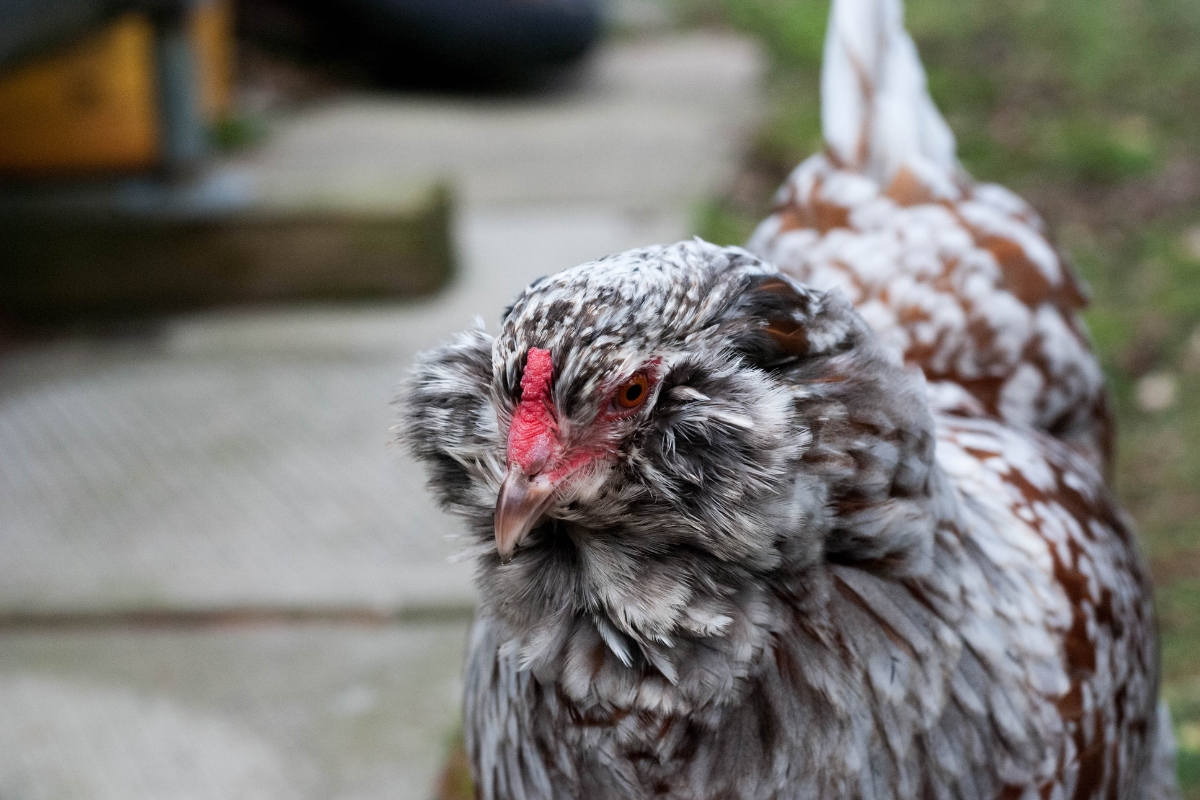Have you ever wondered about those special chickens that lay beautiful blue eggs? You’ve probably heard of Ameraucanas! These unique birds are not only prized for their colorful eggs but also for their distinctive appearance. As a chicken enthusiast who’s raised several Ameraucanas over the years, I’m excited to share everything about what these fascinating birds look like.
Physical Characteristics of Ameraucana Chickens
Ameraucana chickens have several distinctive features that set them apart from other breeds. Let’s break down their appearance
The Face: Muffs and Beard
One of the most recognizable features of Ameraucana chickens is their facial appearance:
- Muffs and beard: These chickens have puffy feathers around their face that create what’s often described as a “chipmunk face” or “puffed-out cheeks”
- Bay red eyes: Their eyes have a reddish-bay color that can give them a somewhat fierce look (though they’re actually quite docile!)
- Pea comb: Ameraucanas have a small, red pea comb on top of their head
- Small wattles: Their wattles are red but much smaller than many other breeds (or sometimes non-existent)
Body and Feathers
Ameraucanas have a distinctive body structure and feathering
- Full tail: Unlike their Araucana ancestors (which are rumpless), Ameraucanas have a full tail that is carried at approximately a 45-degree angle to the body
- Clean legs: Their legs are clean of feathering
- Slate blue to black legs: The leg color should be slate blue to black depending on the color variety
- Medium size: They are considered a light fowl
Size and Weight
Ameraucanas are medium-sized chickens
- Standard males: About 6.5 pounds
- Standard females: About 5.5 pounds
- Bantam males: 26-30 ounces
- Bantam females: 24-26 ounces
Recognized Color Varieties of Ameraucana Chickens
One of the coolest things about Ameraucanas is their variety of beautiful colors! The American Poultry Association recognizes eight official color varieties:
- Black: Solid black body with a hint of green in certain lighting
- Blue: Medium to dark bluish-gray feathers
- Blue Wheaten: Blue-gray with wheaten (golden/brown) accents
- Brown Red: Similar to Buff but with red wheaten coloring on head/neck
- Buff: Bright yellow coloring with an orangish beak
- Silver: Silver-gray coloring
- Wheaten: Golden/tan coloring
- White: Pure white body
![Ameraucana Color Varieties]
I’ve raised both blue and black Ameraucanas, and I must say the blue variety is my absolute favorite – they have this beautiful slate blue color that shimmers in the sunlight!
How to Identify a True Ameraucana
Here’s where things get tricky! Many hatcheries and sellers offer birds labeled as “Americana” or “Americauna” (note the spelling), but these are NOT true Ameraucanas. These are typically “Easter Eggers” – hybrid chickens that may lay blue eggs but aren’t purebred.
True Ameraucana vs. Easter Egger:
| Feature | True Ameraucana | Easter Egger |
|---|---|---|
| Appearance | Consistent with breed standard | Highly variable |
| Leg color | Slate blue to black | Can be yellow or other colors |
| Egg color | Blue only | Blue, green, olive, pink, etc. |
| Price | Around $20 per hen | Much cheaper ($5-10) |
| Beard/muffs | Always present | May or may not have them |
I made this mistake when I first started with chickens – bought what I thought were Ameraucanas but turned out to be Easter Eggers. They’re still lovely birds, but now I know the difference!
Ameraucana Eggs
While not directly about their appearance, it’s worth mentioning that Ameraucanas are famous for their eggs:
- Color: Beautiful light blue eggs (not green or olive like some Easter Eggers)
- Production: About 180-200 eggs per year
- Size: Medium-sized eggs
Temperament and Behavior
The way Ameraucanas carry themselves is also part of their appearance:
- They tend to be alert and active
- They stand upright with a somewhat “hawk-like” appearance
- Many people report they’re predator-savvy and excellent foragers
- They’re typically friendly but not overly cuddly
- Some can be a bit skittish or reserved
Common Questions About Ameraucana Appearance
Are Ameraucanas good flyers?
Yes! Their ability to fly makes them suitable only for keeping within an enclosure or with a high fence.
Do Ameraucanas have tail feathers?
Yes, unlike their Araucana ancestors, Ameraucanas do have tail feathers. The tail should be carried at approximately a 45-degree angle to the body.
How can I tell if my chick is a true Ameraucana?
It’s hard to tell when they’re very young, but by 12 weeks, true Ameraucanas should have slate-colored legs, muffs and beard developing, and a pea comb. Most importantly, purchase from a reputable breeder who specializes in Ameraucanas.
How long do Ameraucanas live?
With proper care, Ameraucanas can live 7-8 years on average, though some individuals have been known to live up to 10 years.
Caring for Your Ameraucana’s Appearance
To keep your Ameraucana looking their best:
- Provide a clean environment to prevent feather soiling
- Ensure adequate protein in their diet for healthy feathers
- Allow access to dust bathing areas to keep parasites away
- Provide shade during hot weather to prevent feather color fading
Summary
Ameraucana chickens are beautiful birds with distinctive muffs and beards, pea combs, and slate-colored legs. They come in eight recognized color varieties and lay gorgeous blue eggs. Their medium size, full tails, and “chipmunk face” make them easily recognizable to those familiar with the breed.
If you’re looking to add some Ameraucanas to your flock, make sure you’re getting true Ameraucanas from a reputable source – not Easter Eggers mislabeled as “Americanas.” The price difference is usually a good indicator – if they’re only $5-10, they’re probably not pure Ameraucanas.
Have you raised Ameraucanas? What’s your favorite color variety? I’d love to hear about your experiences in the comments below!
Note: This article was last updated on September 23, 2025.
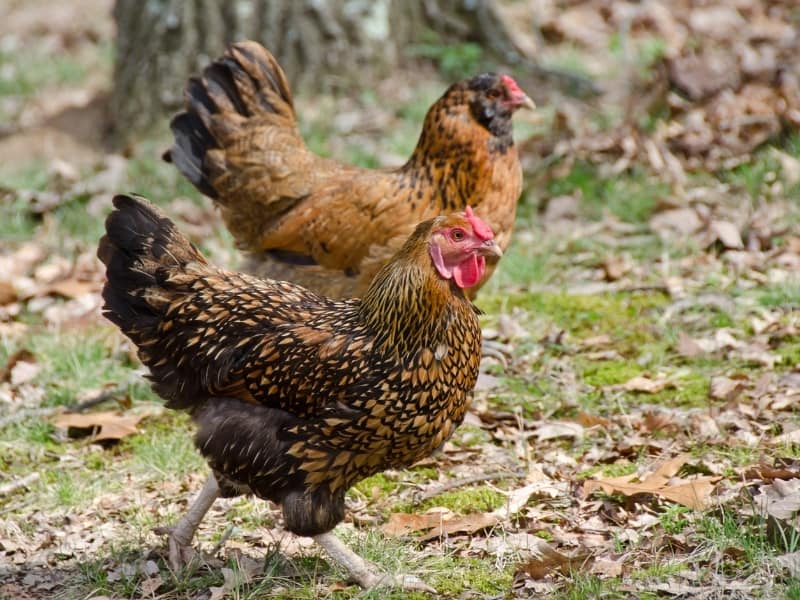
Are Ameraucana chickens good eating?
They have oh-so-tender meat! So while there isn’t much of it, you’ll find them a tasty and cheap chicken to raise for the table because they’re such excellent foragers.
Pros and Cons of Ameraucana Chickens
We decided to add Ameraucana chickens to our flock, and we’re confident that the pros outweigh the cons, but I’ll let you decide for yourself:
- Excellent foragers
- Light blue eggs
- Cold and heat hardy
- Good layers
- Tender meat
- Docile and curious
- Do not enjoy being handled
- Less meat than average
- Hatched chicks prone to cross beak
Curious and energetic, you’ll want to keep an eye on these birds if you have a doggy door! Exploring is a passion for them, and their reactions to their world will leave you laughing. While they don’t like to be handled, they’re friendly and don’t startle easily.
With trim muffs and clean legs, they find themselves comfortable in any climate in any season. Many people raise them as dual-purpose birds as their foraging skills and lighter weight make them a low-cost option. Males will weigh in at about 6.5 pounds, and hens at about 5.5. But where they really shine is through their plentiful blue eggs!
- Breed Name: Ameraucana (Pronounced: UH-MEH-RAU-KAA-NUH)
- Breed Type: All Other Standard Breeds
- Temperament: Active and docile
- Size: Medium
- Eggs Per Year: 150-200
- Egg Size: Medium
- Egg Color: Blue with occasional green tints
- Lifespan: 7-8 years
- Time To Maturity: 5-10 months
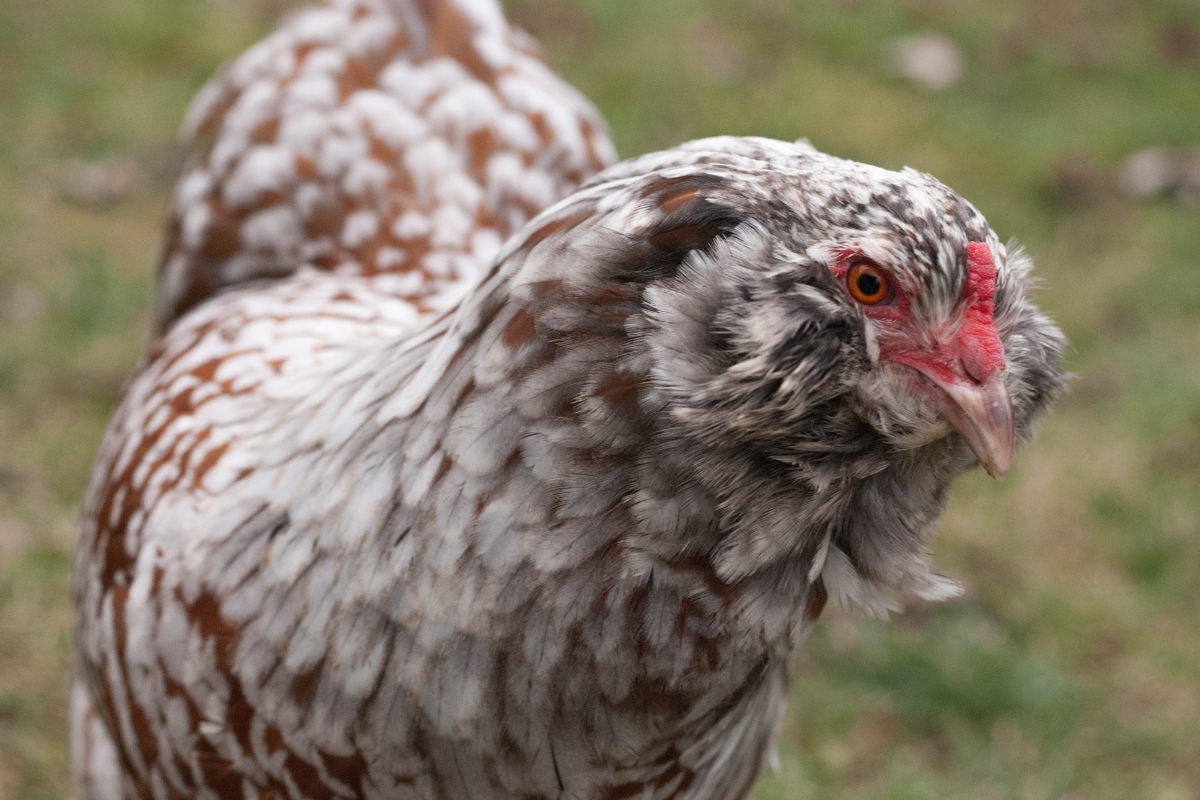
You’ll be able to tell if you’re looking at an Ameraucana by the color of its eggs. While some breeds, like the Easter Egger chicken, also lay blue eggs, the Ameraucana is the only one that won’t have multiple egg colors in its clutch. Muffs, beards, and a pea comb all will help distinguish the Ameraucana over another breed.
Chicks in this breed are not autosexing, and you may not know your hens until they’re mature enough to lay—potentially up to 10 months old! However, males may begin to try crowing and will have longer neck feathers as early as 3 months old.
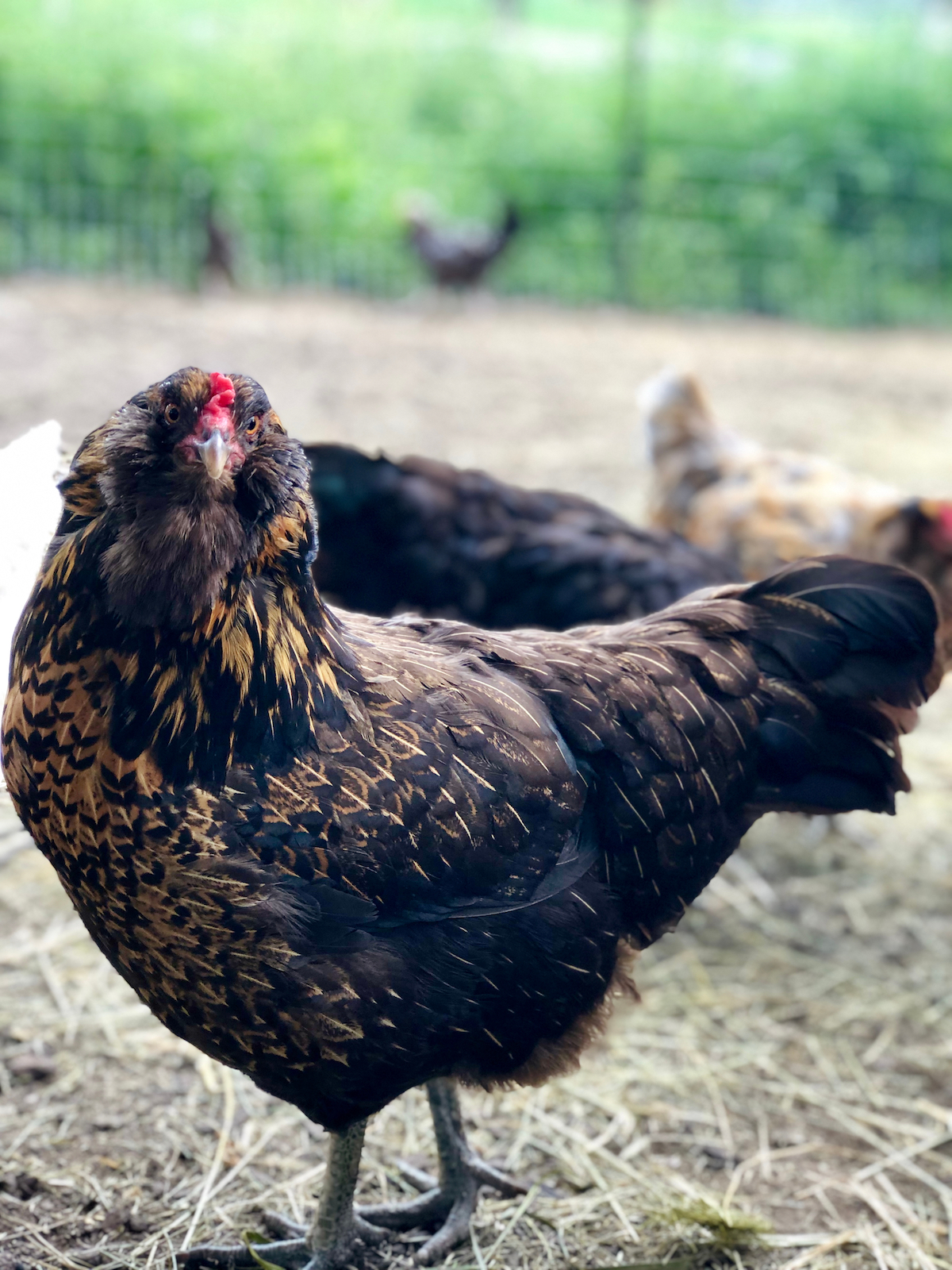
Energy and an explorer’s heart define them, and they won’t handle extended confinement well.
Provided enough space to roam, you’ll find them a docile and friendly bird that will happily come say hello. They get along with flockmates and children but will begin to get flighty if picked up and handled.
With a short pea comb and clean legs, there’s no fear of frostbite in this breed. Their muffs and beards will help keep them warm in the winter, but aren’t full enough to cause trouble in warmer climates.
An all-around ready for any weather bird!
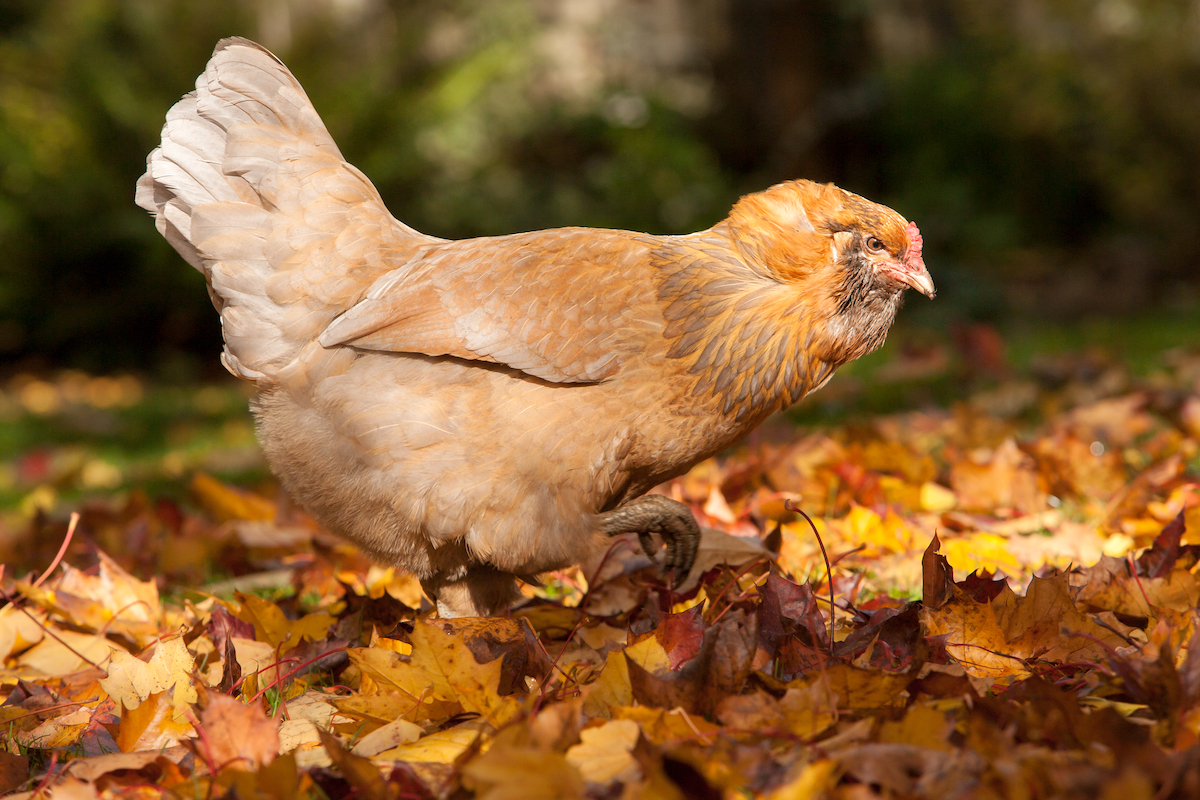
You’ll find they lay an average of 3-4 eggs per week during the egg-laying season. While they will lay less often during molting season, they will lay well into the winter if they’re well cared for.
A beautiful light blue egg is what you’ll find in your nesting boxes. Occasionally your eggs may be complemented by a few pale green-tinted eggs.
You won’t find an abundance of meat on Ameraucanas. But they’re such excellent foragers their feed costs are low enough to make them worth it.
While their meat is generally tender, owners report it’s most flavorful at about 14-16 weeks old.
Ameraucanas are not inclined to be broody birds. But, when they do hatch their eggs, your hens will become attentive and highly protective mothers to their chicks.
Top-tier foraging skills for these birds! You’ll find they stay alert and are predator savvy—this despite the beards that obscure a bit of their vision.
Foraging is a necessity for this breed and is something you should plan for rather than possibly offer to them.
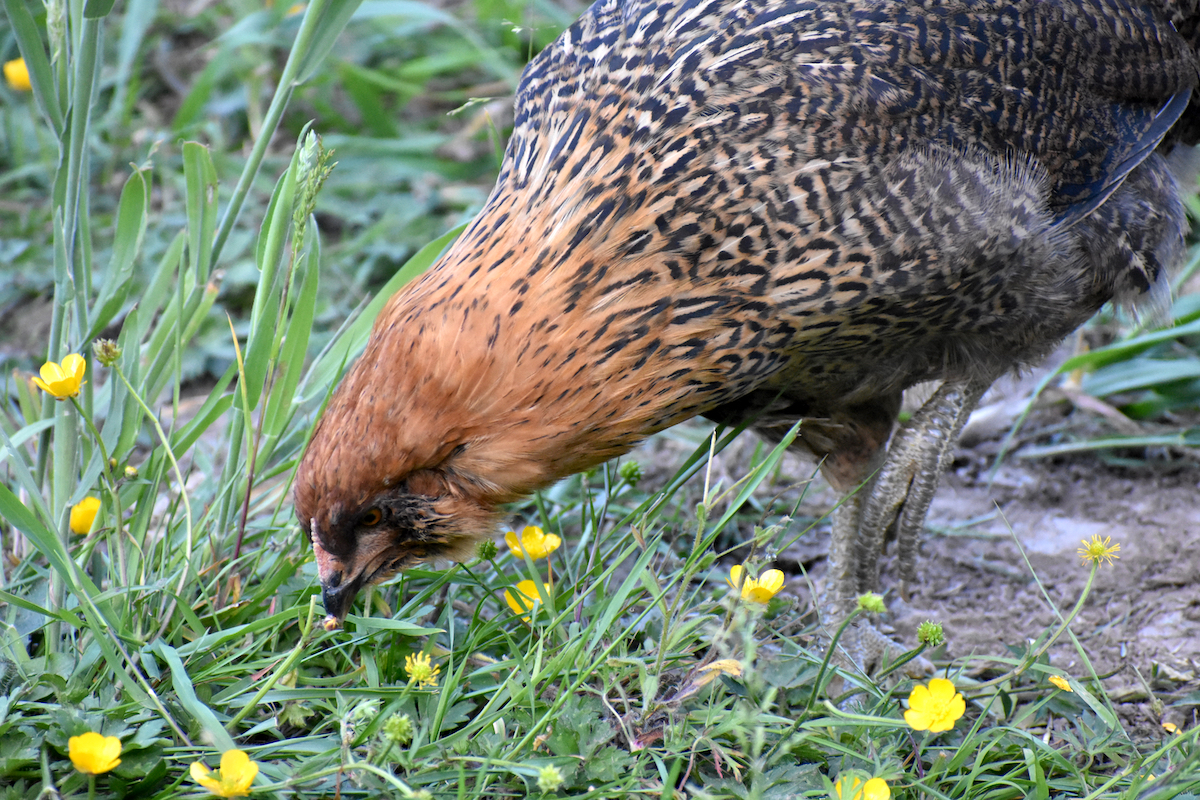
The majority of the heritage for Ameraucanas comes from Chilean Araucanas that were suspected to have some Dominique, Rhode Island Red, and Barred Plymouth Rock mixed in. After being brought to America, they were lightly crossed with several other breeds: Rhode Island Red and Barred Plymouth Rocks again, then Red Cuban Game, Silver Duckwing Game, Brahma, Cornish, Silver Spangled Hamburg, Ancona, and White and Brown Leghorns.
The goal of all these crosses was to maintain the blue eggshells while breeding out some lethal genetics inherent to Araucanas. They were successful, and Ameraucanas are quite healthy in general.
Like all chickens with muffs and beards, you’ll want to check them for lice and mites regularly.
If you’re raising your own Ameraucanas, be aware they are more prone to developing cross beak than other breeds. Cross beak (when the top and bottom portions of the beak become misaligned) will make it difficult for a chicken to eat and drink. Birds with this condition will be much higher maintenance.
